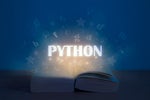

Serdar Yegulalp
Senior Writer
Serdar Yegulalp is a senior writer at InfoWorld, covering software development and operations tools, machine learning, containerization, and reviews of products in those categories. Before joining InfoWorld, Serdar wrote for the original Windows Magazine, InformationWeek, the briefly resurrected Byte, and a slew of other publications. When he's not covering IT, he's writing SF and fantasy published under his own personal imprint, Infinimata Press.


Intro to Nuitka: A better way to compile and distribute Python
You can use Nuitka to compile Python programs to standalone executables, then redistribute them without the Python runtime.

Python garbage collection and the gc module
How does Python deal with memory management? Learn the ins and outs of Python's garbage collection system and how to avoid its pitfalls.

Use Cython to accelerate array iteration in NumPy
NumPy is known for being fast, but there's always room for improvement. Learn how to use Cython to iterate over NumPy arrays at the speed of C.

7 YAML gotchas to avoid—and how to avoid them
YAML is a human-readable configuration file format that is flexible and easy to understand, but fraught with unexpected pitfalls. Here’s how to dodge its most precarious issues.

What’s the Go programming language really good for?
Understand the strengths, weaknesses, use cases, and future directions of Google’s hit programming language.

What is TOML? An easier way to configure Python apps and more
TOML makes writing configuration files simple, straightforward, and more human-readable than many other formats, including JSON.

How to use Python dictionaries
Learn how Python's dictionary data structure works as a powerful and versatile way to store and retrieve objects and data in your applications.

ASGI explained: The future of Python web development
Learn how the new asynchronous standard for Python web applications makes apps faster, more flexible, and more future-proof.

How to use Rust with Python, and Python with Rust
You can merge Python's convenience with Rust's speed, thanks to libraries in both languages. Get started with the PyO3 project and cpython crate.

What is NoSQL? Databases for a cloud-scale future
SQL databases have constraints on data types and consistency. NoSQL does away with them for the sake of speed, flexibility, and scale.

Intro to PyScript: Run Python in your web browser
PyScript lets you run Python scripts right in the browser, side by side with JavaScript, with two-way interaction between your code and the web page.

12 free tools for API design, development, and testing
These free and free-tier services and open source utilities will have your APIs up and running in no time, and will keep them running smoothly.

What is TensorFlow? The machine learning library explained
TensorFlow is a Python-friendly open source library for numerical computation that makes machine learning and developing neural networks faster and easier.

What is WebAssembly? The next-generation web platform explained
WebAssembly is a binary instruction format and virtual machine that brings near-native performance to web browser applications, and allows developers to build high-speed web apps in the language of their choice.

9 fine libraries for profiling Python code
From simple timers and benchmarking modules to sophisticated stats-based frameworks, look to these tools for insight into the performance of your Python program.

4 useful features you won't be seeing in Python
Here's why some popular features found in other languages—including static typing, multiline lambdas, and native JIT compilation—are a no-go for Python, at least for now.

PyScript brings Python into the browser, more easily than ever
A new project from Anaconda delivers the Python runtime in a web page, via a single JS include, and with access to many popular Python packages.

Virtualenv and venv: Python virtual environments explained
Take advantage of virtual environments in Python to create and manage separate environments for your Python projects.

6 ways to package Python apps for re-use
Do you have a Python application you want to give to the world, or at least your teammates? Here are six ways to package Python applications for distribution.